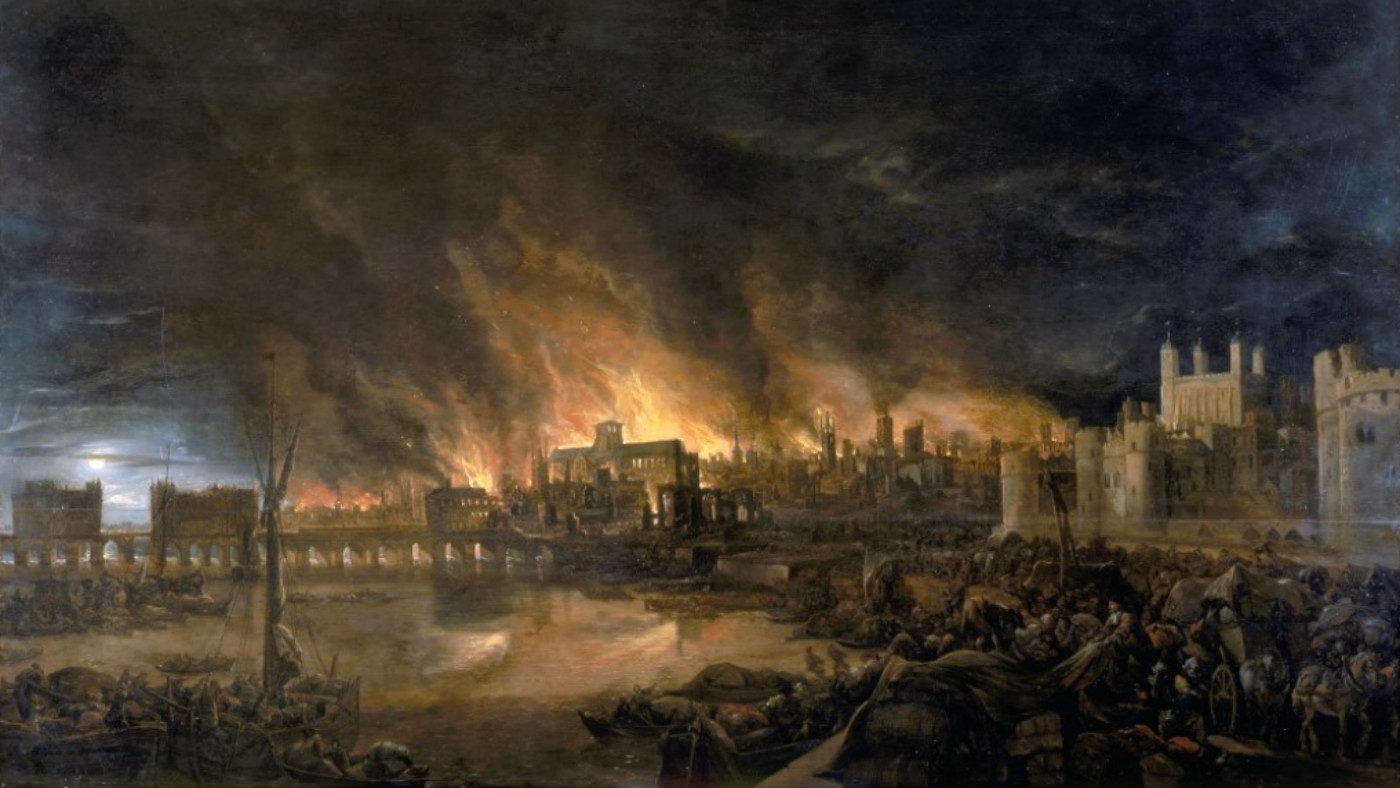How did the Great Fire of London start?
The blaze was extinguished 352 years ago today

The infamous Great Fire of London was finally extinguished 352 years ago today.
Over the course of three days in September 1666, what started as a small fire in a bakery on Pudding Lane grew into a major conflagration that left at least 350 acres of London as rubble and ash.
Around 13,200 houses and 84 churches were destroyed and a staggering 100,000 people were left homeless, many forced to live in tents and shacks in surrounding fields for up to eight years afterwards.
The Week
Escape your echo chamber. Get the facts behind the news, plus analysis from multiple perspectives.

Sign up for The Week's Free Newsletters
From our morning news briefing to a weekly Good News Newsletter, get the best of The Week delivered directly to your inbox.
From our morning news briefing to a weekly Good News Newsletter, get the best of The Week delivered directly to your inbox.
Remarkably, the death toll is believed to have been low, with Great Fire historian Adrian Tinniswood claiming it was in “single figures”.
A great rebuilding project followed, with Sir Christopher Wren at the helm, and the city literally rose again from the ashes.
But what exactly happened and how did Londoners react at the time?
How did the Great Fire start?
A free daily email with the biggest news stories of the day – and the best features from TheWeek.com
On Sunday 2 September 1666, a small fire started on Pudding Lane, in the centre of London.
In the overcrowded city, with many homes built using wood and thatch, the flames quickly spread. London Fire Brigade says that “following a long, dry summer the city was suffering a drought”, and that “water was scarce and the wooden houses had dried out, making them easier to burn... it was a recipe for disaster”.
Added to that was the weather.
"The fire was propelled by a storm wind blowing in from the east. The flames were being pushed across the city. It seemed unstoppable," Meriel Jeater, the curator of the Museum of London's Fire! Fire! Exhibition, told The Guardian.
The best known contemporary account comes from diarist Samuel Pepys, who wrote: “Ten thousand houses all in one flame, the noise and cracking and thunder of people, the fall of towers, houses, and churches, was like a hideous storm.
“The air all about so hot and inflamed that at last one was not able to approach it.”
How many people died?
Astonishingly, only six people are known to have died. This may have been down to the quick thinking of Pepys, who suggested blowing up buildings with gunpowder to create fire breaks, says the Daily Mirror.
However, not everyone agrees. In his book The Great Fire of London: In That Apocalyptic Year, 1666, historian Neil Hanson speculates that considerably more undocumented civilians would have perished and their remains never identified, while the homelessness, starvation and cold weather that took hold in the wake of the disaster would have claimed more lives, too.
Who was to blame?
“The need to blame somebody was very, very strong,” says Tinniswood. Londoners felt that “it can’t have been an accident, it can’t be God visiting this upon us, especially after the plague, this has to be an act of war”.
Nowadays, almost all fingers point to one man: Thomas Farriner, a baker.
Fire! Fire! puts the blame squarely on Farriner's bakery. Among the exhibition's displays is a site map drawn for the commissioners in charge of rebuilding the city and bearing the firm inscription: “Mr Farriner's grounde where the fyer began.”
However, the baker insisted for the rest of his life that his oven had been properly raked out before he went to bed and could not have been the cause.
Nevertheless, the Museum of London believes it is an open-and-shut case.
“Whoever was actually to blame there, it started in the bakery, all the evidence points in that direction,” said Jeater.
Pepys blamed the indecisiveness of the lord mayor at the time, Sir Thomas Bloodworth, for not doing more to stop the fire spreading.
“People do all the world over cry out of the stupidity of my Lord Mayor in general; and more particularly in this business of the fire, laying it all upon him,” he wrote.
Were there any other suspects?
The finger was pointed in all directions and, as England was at war with France and the Netherlands, suspicion fell particularly on plotting foreigners.
“A French watch maker who claimed to have started it was judged mad but hanged anyway,” reports the Guardian.
“Divine judgment on the sinfulness of the citizens was also blamed, and a stone plaque [unveiled at] the bakery site in 1681, blaming Roman Catholics, was only removed because the number of people stopping to read it was causing traffic jams.”

